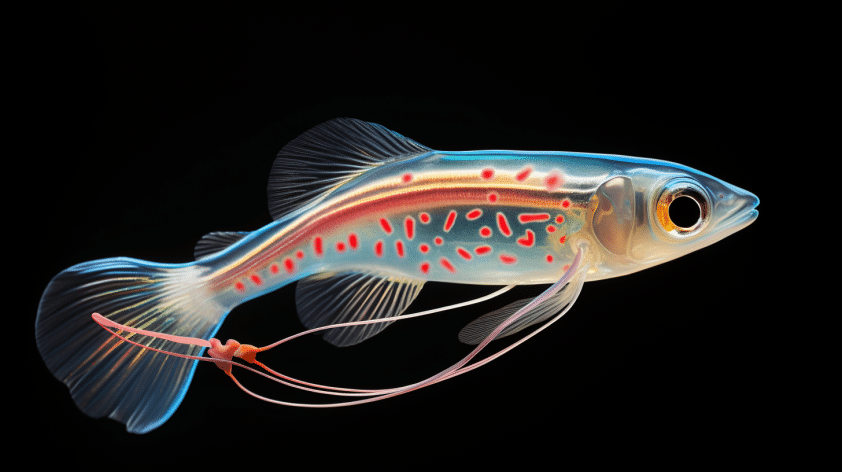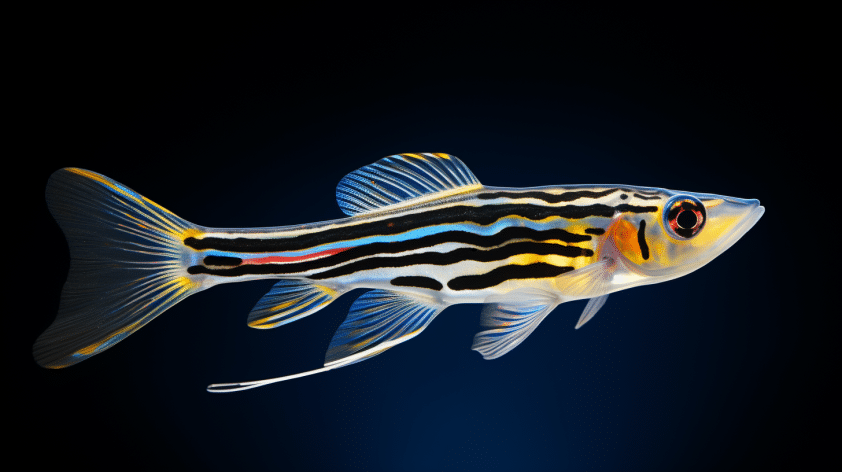Hearing loss is a major health issue that affects people of all ages.
It can be caused by loud noise, aging, disease, or certain medications and often cannot be reversed.
Unlike humans, some animals like birds, fish, and frogs are able to regenerate the sensory hair cells inside their ears that detect sound.
Understanding how these animals regrow hair cells could lead to new treatments for hearing loss in people.
Researchers studied hair cell regeneration in zebrafish to uncover genes and regulatory elements involved in the process.
Zebrafish are a useful model because their hair cells are similar to human inner ear hair cells and they can regenerate hair cells as adults.
Key findings:
- Zebrafish can completely regenerate inner ear hair cells within 2 weeks after the cells are killed off. The surrounding support cells transform into progenitor cells that multiply and become new hair cells.
- Comparing gene activity of support, progenitor, and hair cells over time showed that certain transcription factors (proteins that control gene expression) such as Sox and Six are turned on/off at specific stages.
- Sox genes activate early in support cells, while Six genes activate later in progenitor and hair cells. This sequential activation suggests they work together to drive regeneration.
- Deleting an enhancer (regulatory element) upstream of Sox2 disrupted the timing of Sox2 expression and impaired hair cell regeneration, indicating precise Sox2 regulation is critical.
- Thousands of genomic regions were newly activated during regeneration and may contain additional regulatory elements important for the process.
Hearing Regeneration: Hair Cell Regrowth After Damage
Hair cells are sensory receptors found in the inner ear that convert sound into electrical signals sent to the brain.
Rows of these delicate cells with hair-like bundles sit inside fluid-filled cochlea chambers.
When sound causes the hairs to vibrate, channels open allowing ions to flow in and trigger an electrical impulse.
Hair cells can be easily damaged by loud noises, certain drugs, infections, and age-related wear and tear.
Unlike supporting cells and other cell types that can be readily replaced, mammalian cochlear hair cells do not regenerate.
Once lost, they are gone for good, causing permanent hearing loss and impairment.
In contrast, some vertebrates like birds, frogs, lizards, and fish can spontaneously regenerate hair cells throughout adulthood.
When hair cells die off, surrounding support cells transform into progenitor cells that divide and differentiate into new functional hair cells.
This allows the animals to maintain hearing after damage.
Zebrafish model of hearing restoration & hearing loss cure
Researchers studied the process in zebrafish, whose regenerative abilities and genetic toolbox make them a prime model for research.

To induce hair cell loss, they genetically engineered zebrafish to produce diphtheria toxin in hair cells, which caused the cells to die off.
They then tracked what happened over the next 2 weeks as the fish regenerated new hair cells.
Initially after diphtheria toxin treatment, nearly all hair cells in the zebrafish inner ear disappeared.
Over the next few days, surrounding support cells transformed into progenitor cells and began multiplying.
As the progenitor cells divided, they gradually transitioned into immature hair cells that became mature hair cells over the next week.
Within 9-14 days, the zebrafish had completely regenerated a full set of functioning hair cells.
Tracking the changes in gene activity over time provided molecular insights into the step-by-step process.
Right after the hair cells were killed off, support cells activated Sox genes and remained in a suspended state.
Within a couple days, the support cells transformed into progenitor cells and began dividing, coinciding with activation of Six genes and hair cell genes like Atoh1a.
As progenitor cells multiplied, they eventually differentiated into immature hair cells with high protein production for development.
In the final maturation phase to become functioning hair cells, gene expression shifted to molecules involved in mechanosensation and nerve signaling.
Transcription Factors Sox and Six Orchestrate Regeneration
To pinpoint genes involved in coordinating regeneration, the researchers analyzed which regions of the genome became more accessible after hair cell loss, indicating increased gene transcription.
Thousands of regions in the DNA were newly activated compared to undamaged cells.
Two key transcription factor families – Sox and Six – emerged as central players in the process.
Transcription factors bind to specific DNA sequences to control which genes turn on and off.
The analysis found certain Sox genes activate first in support cells, while Six genes activate later in progenitor and mature hair cells.
This pattern suggested Sox and Six work sequentially to shuffle the cells through the transformation process from support cell to progenitor to hair cell.
Deleting a regulatory region that controls Sox2 expression disrupted hair cell regeneration, highlighting that precisely timed Sox2 activation is essential.
Finding Novel Targets for Hair Cell Regeneration
The study provided new understanding of the step-by-step molecular changes that enable zebrafish to completely regenerate hair cells.
The findings point to Sox and Six transcription factors as key drivers of the process by sequentially activating genetic programs that push the cells through their transformations.
Importantly, thousands of additional DNA regions were newly activated during regeneration that may contain other key regulatory elements.
Future studies can now investigate these sequences and assess whether they control regeneration-related genes.
By deletion experiments, the researchers also demonstrated it’s possible to disrupt the regeneration process by altering a single regulatory element.
Their work helps pave the way for screening more regulatory elements and transcription factors that could serve as targets to improve hair cell regeneration.
Insights from studying zebrafish could eventually help identify therapeutic strategies to activate hair cell regeneration in human ears.
This could enable recovery of hearing after irreversible hair cell loss due to noise exposure, aging, or disease.
Understanding nature’s secrets of regeneration may lead to a future where hearing loss is treatable by reigniting our dormant regenerative capabilities.
References
- Study: Zebrafishing for enhancers of hearing regeneration
- Authors: Karen Echeverri (2022)
- Study: A regulatory network of Sox and Six transcription factors initiate a cell fate transformation during hearing regeneration in adult zebrafish
- Authors: Erin Jimenez et al. (2022)







